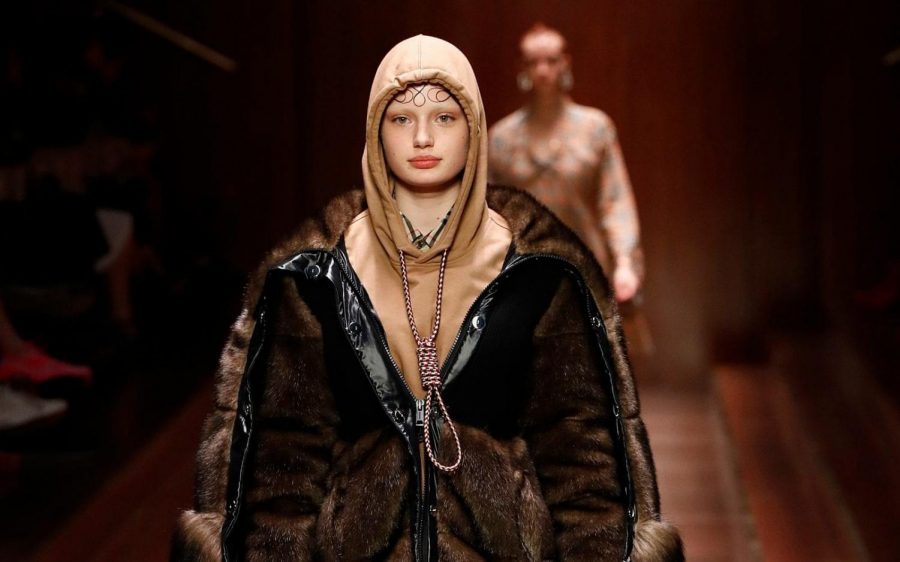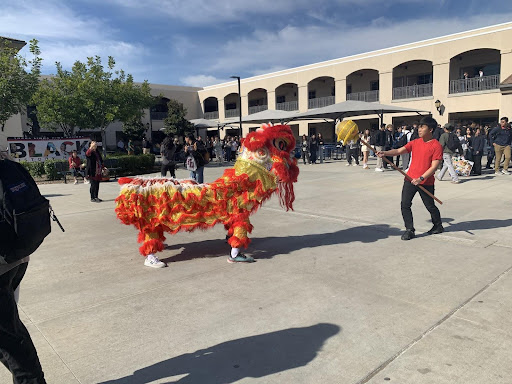Fashion Antics
How Luxury Brands are Looking to Gain Publicity
Photo courtesy of John Phillips/BFC
Burberry sent a model down the runway with her hoodie strings tied in a noose.
March 13, 2019
Burberry certainly turned heads during its recent fashion show by sending a model down the runway in a hoodie with the strings tied to look like a noose around her neck. Similarly, Gucci gained considerable attention–albeit negative–when people pointed out the offensive nature of a sweater that they were selling that looked like it was portraying blackface. So many other instances of fashion brands creating offensive fashion pieces exist, yet why is it they never seem to learn from their mistakes?
Unfortunately, many of these fashion brands are likely doing it on purpose in order to create a buzz in the media. As the cliche saying goes, after all, even bad publicity is publicity. However, at the end of the day, they need to be more responsible and understand that they cannot be using offensive material as a way to stimulate conversation about their brands.
Other brands, particularly luxury fashion brands, have already received backlash for similar content. Prada recently had to pull keychains portraying “a Golliwog, the 19th-century blackface character with big round eyes and large red lips” (Washington Post). Last year, Dolce and Gabbana canceled an event after its advertisements showed models struggling to eat spaghetti with chopsticks- mocking stereotypes about Asian women. Decades ago, Chanel sold a dress with a verse from the Koran written on it and appropriations of Native American headdresses. In 2001, Viktor & Rolf painted their models black for a fashion show. Clearly, this is an issue that has been ongoing for many years.
One of the models from the Burberry fashion show, Liz Kennedy, spoke out on Instagram against the decision to tie the hoodie strings in a noose. She pointed out that “Suicide is not fashion,” and that “It is not glamorous nor edgy.” Furthermore, she criticized the company for showing such a negative outfit to “the impressionable youth” despite the “rising suicide rates worldwide” and “the horrifying history of lynching.”
Kennedy also shared a disturbing story of what happened behind the scenes, saying that they “hung [a noose] from the ceiling” and “were laughing about it in the dressing room.” Clearly, such behavior is unacceptable, however, when she tried to express her concerns, she was told to “write a letter.” Unfortunately, the only response that her letter received was a statement that “it’s fashion. Nobody cares about what’s going on in your personal life so just keep it to yourself.” This indifference happening behind the scenes of the fashion industry is both dangerous and unwanted. As Sarah Chen (11) puts it, “it is inappropriate for them to not consider how much their actions are impacting other people.”
Major luxury brands, especially ones as well-known as Burberry and Gucci, should be more responsible. Young people around the world are watching their designs, fashion shows, and ultimately- their messages. Therefore, they should not be telling the world that it is okay to wear or sell clothing that promotes suicide or racism. It is time for these fashion brands to stop using major social and cultural issues for publicity, and instead, show the world how important it is to respect others.





















